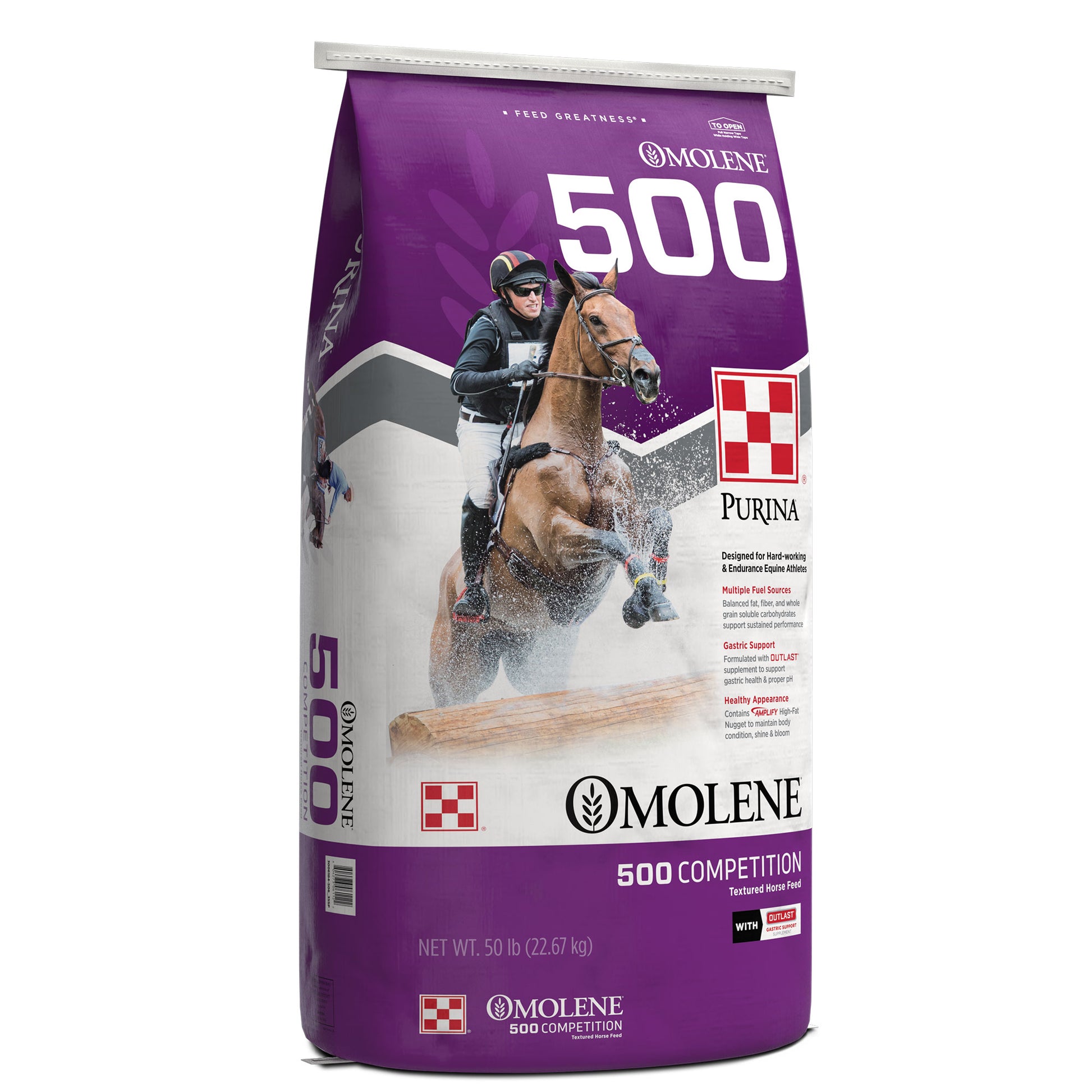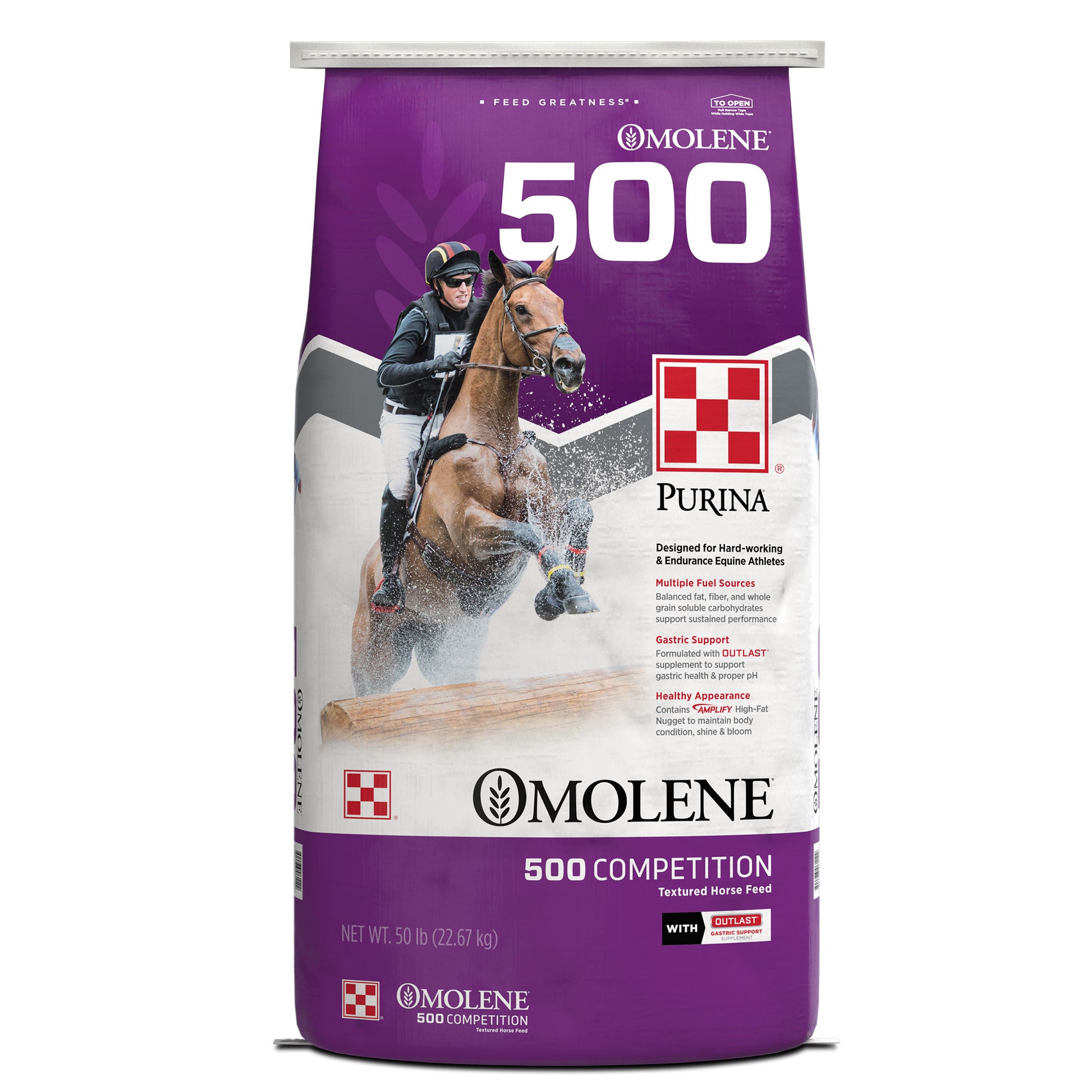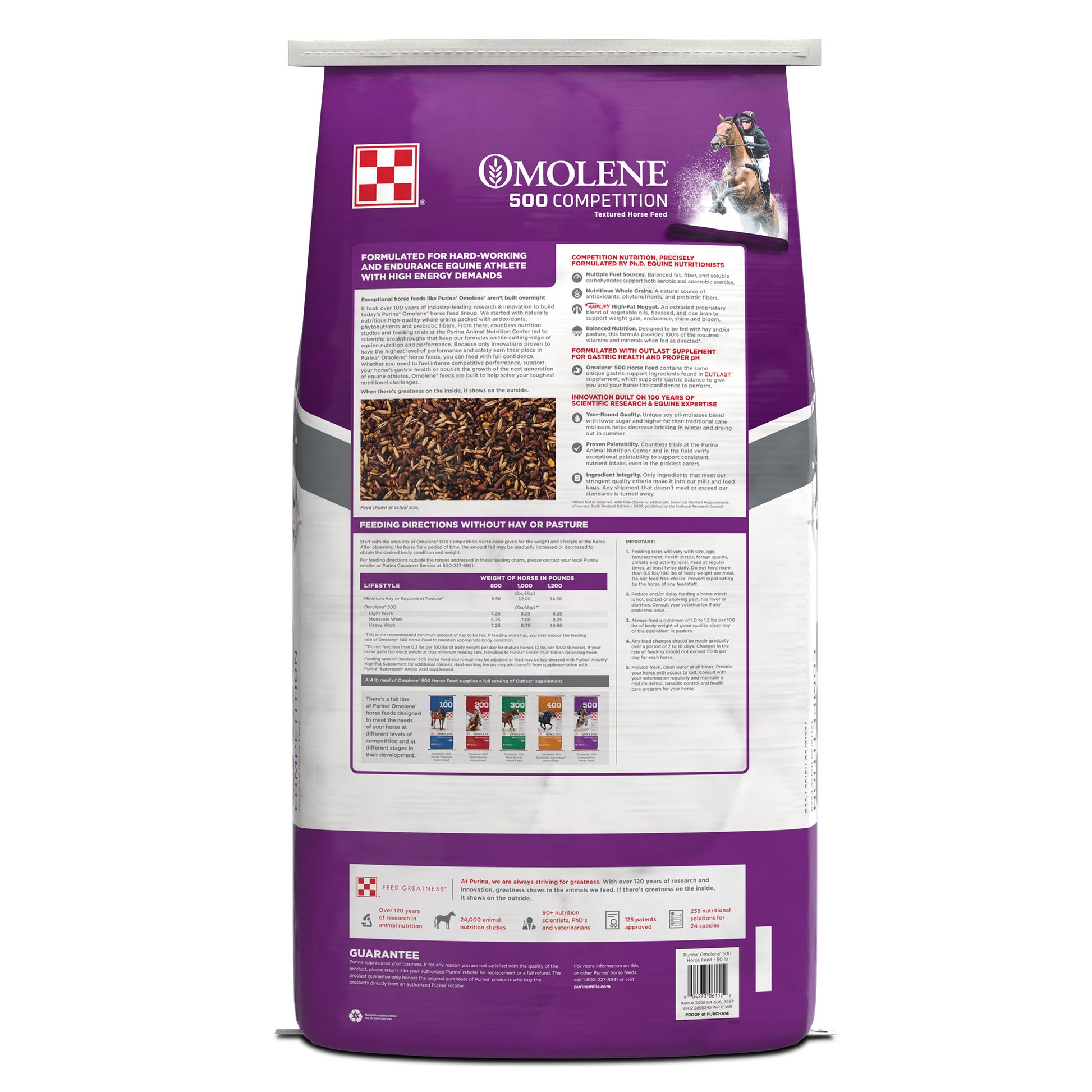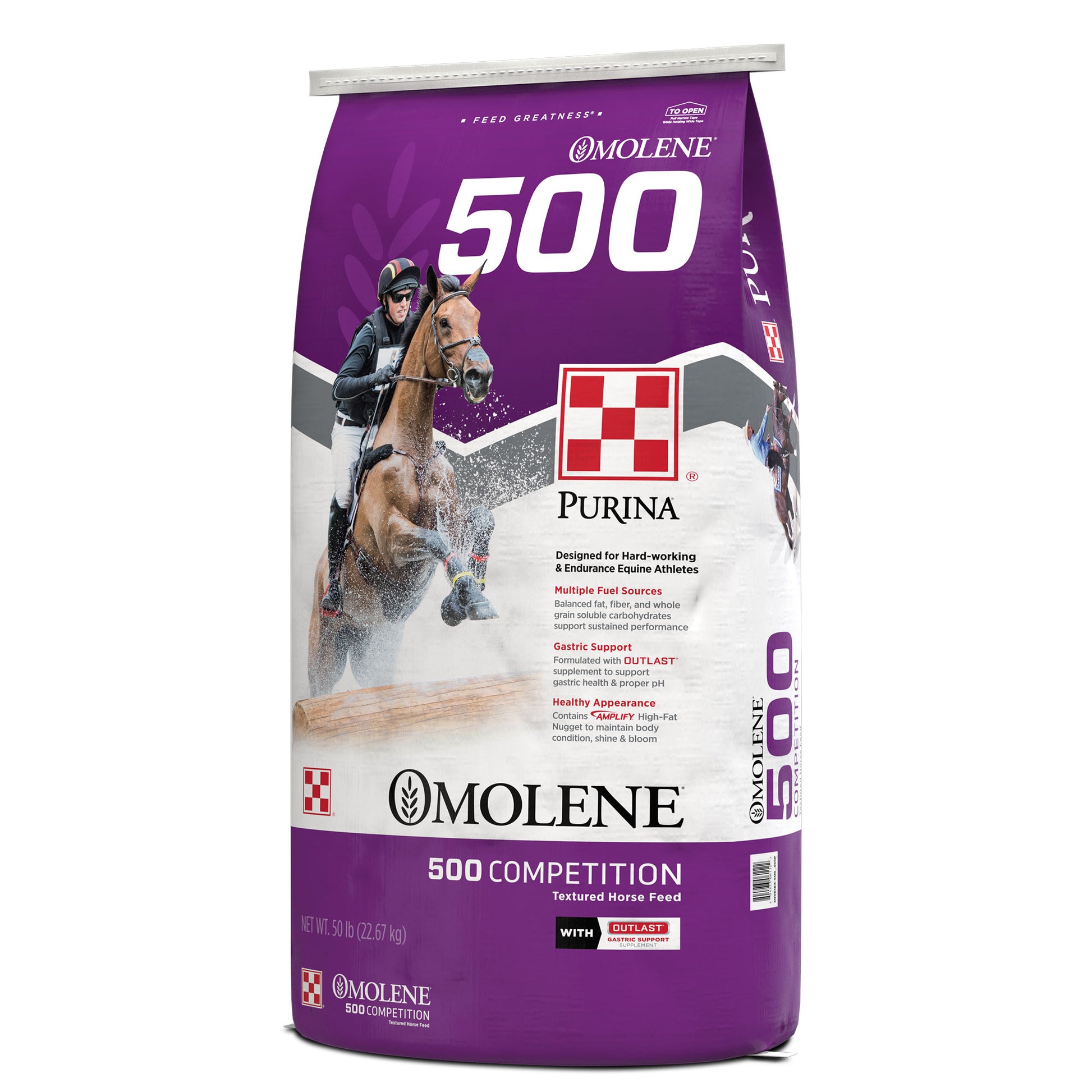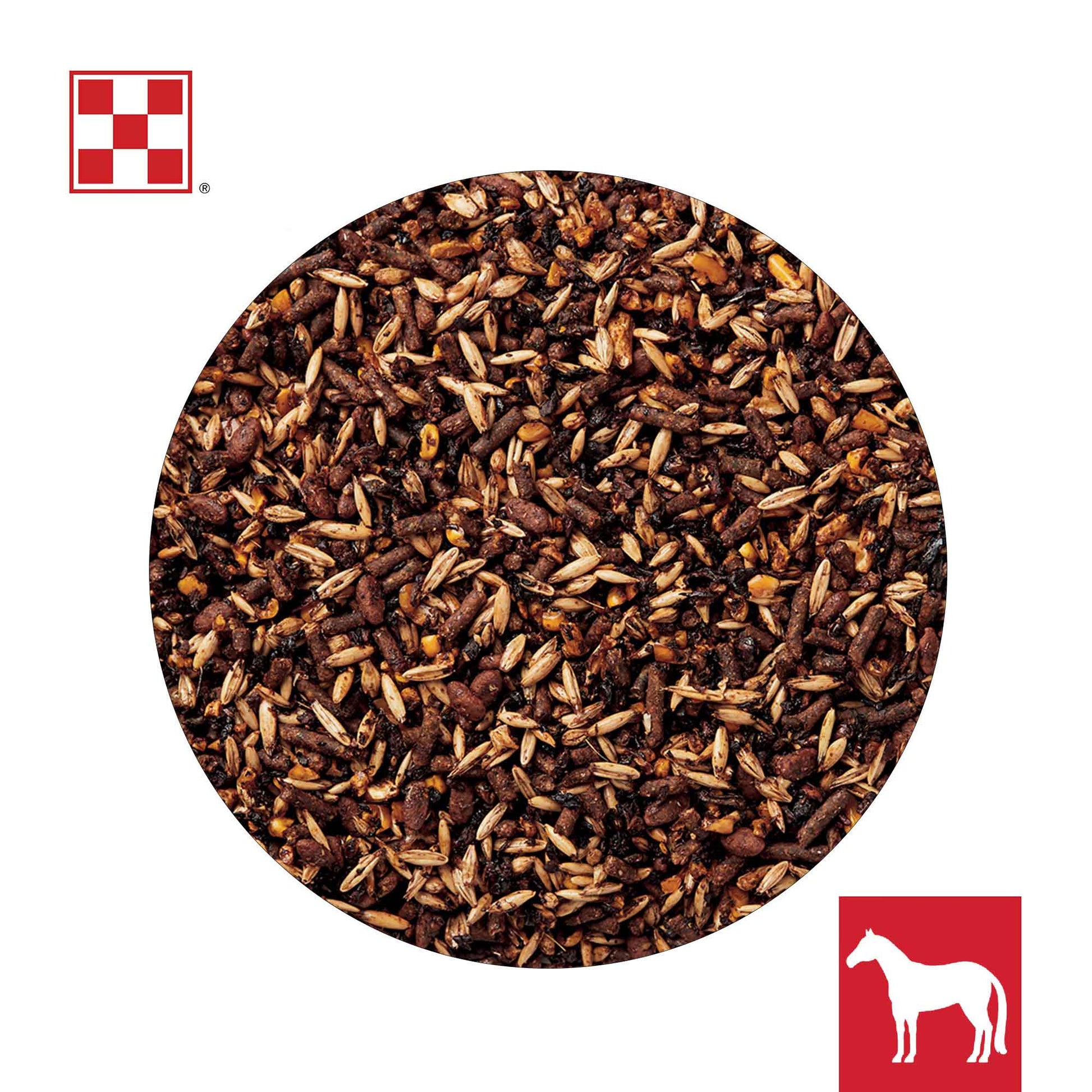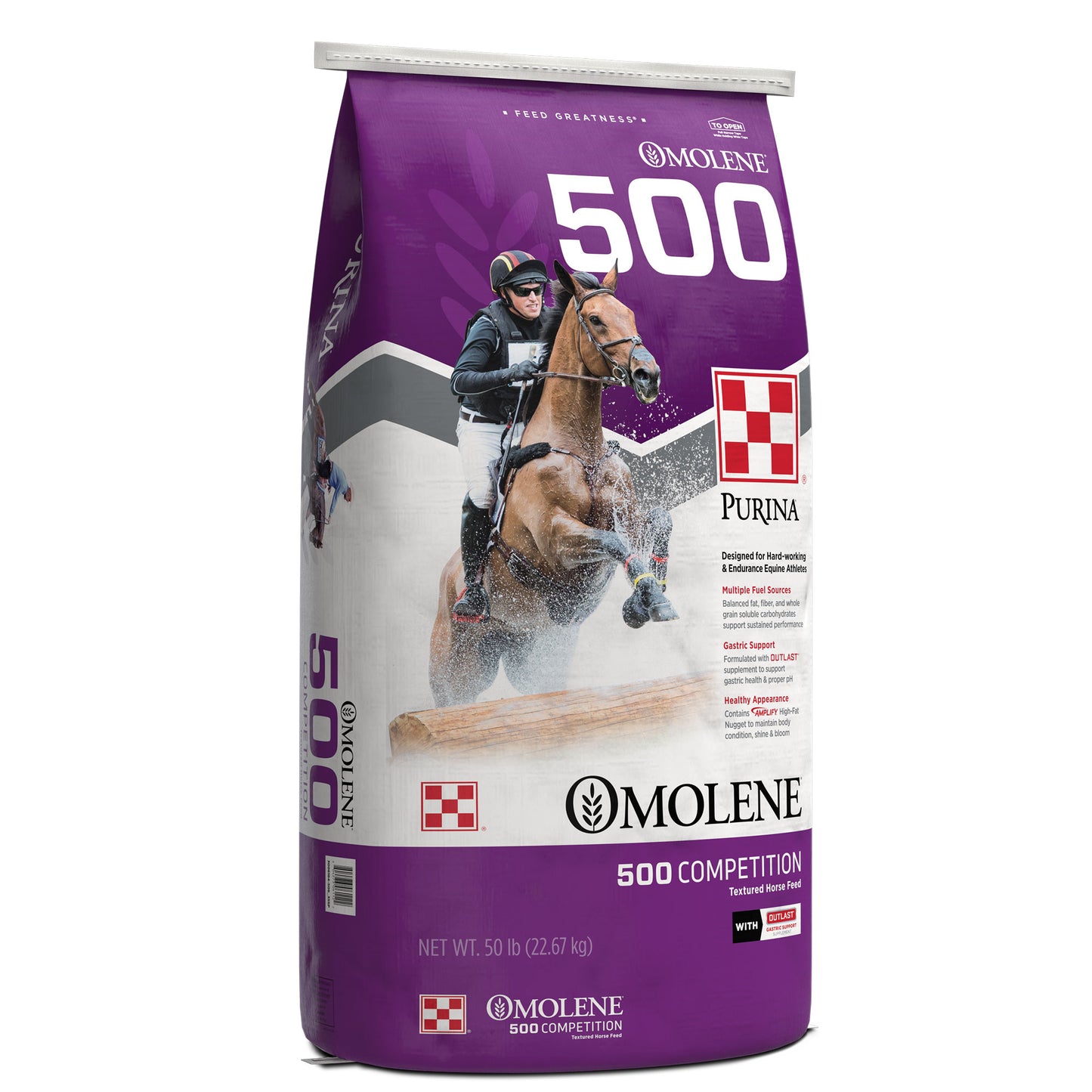
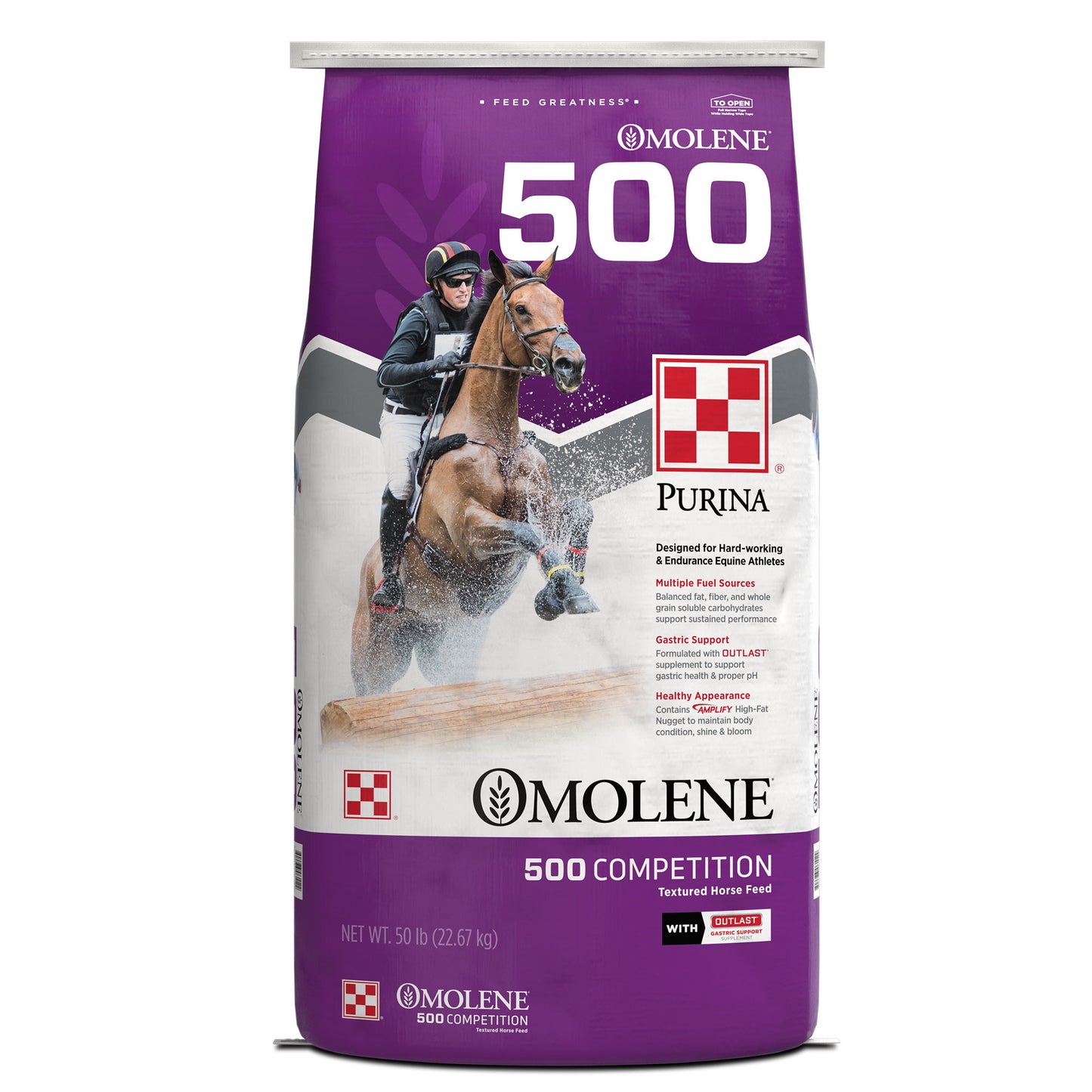
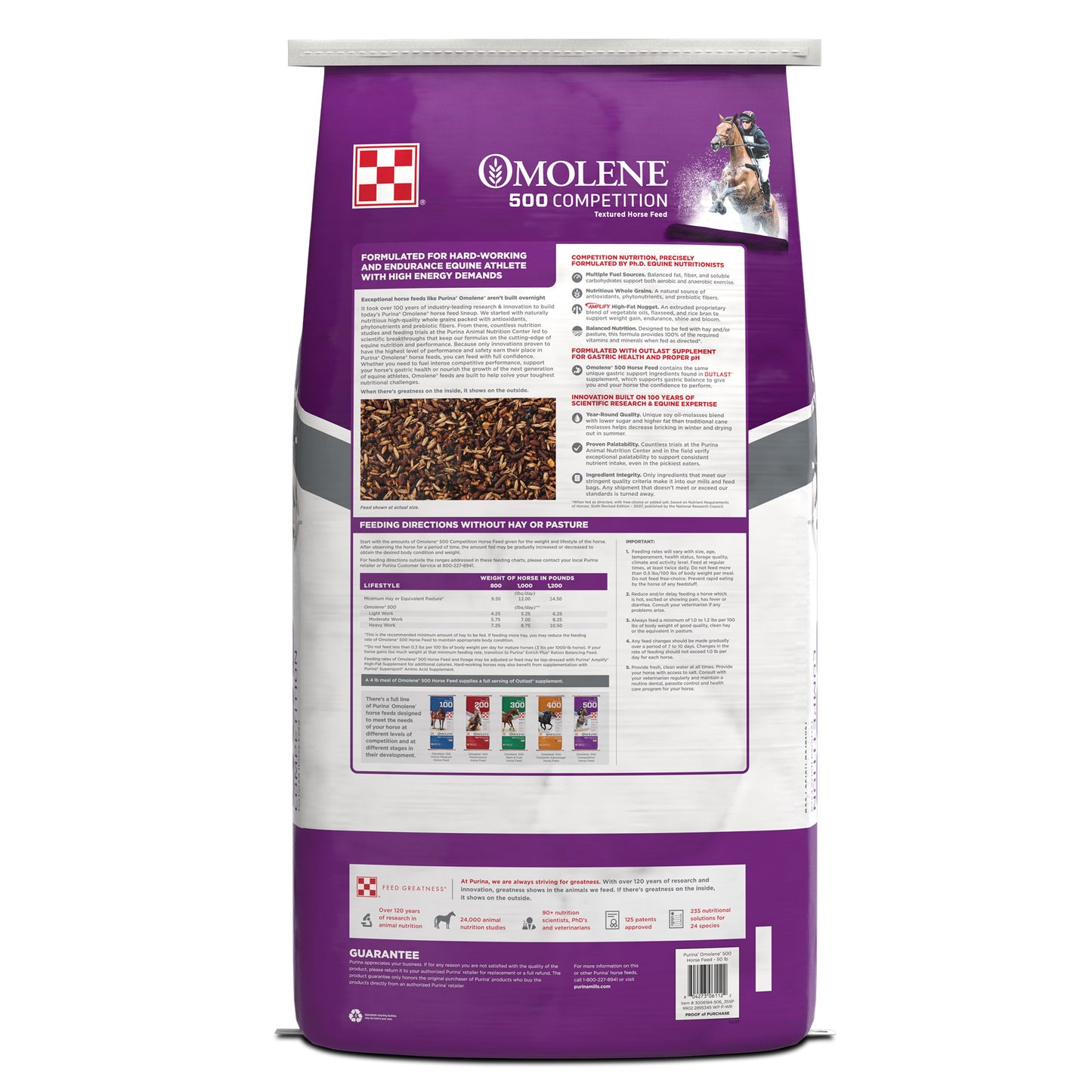
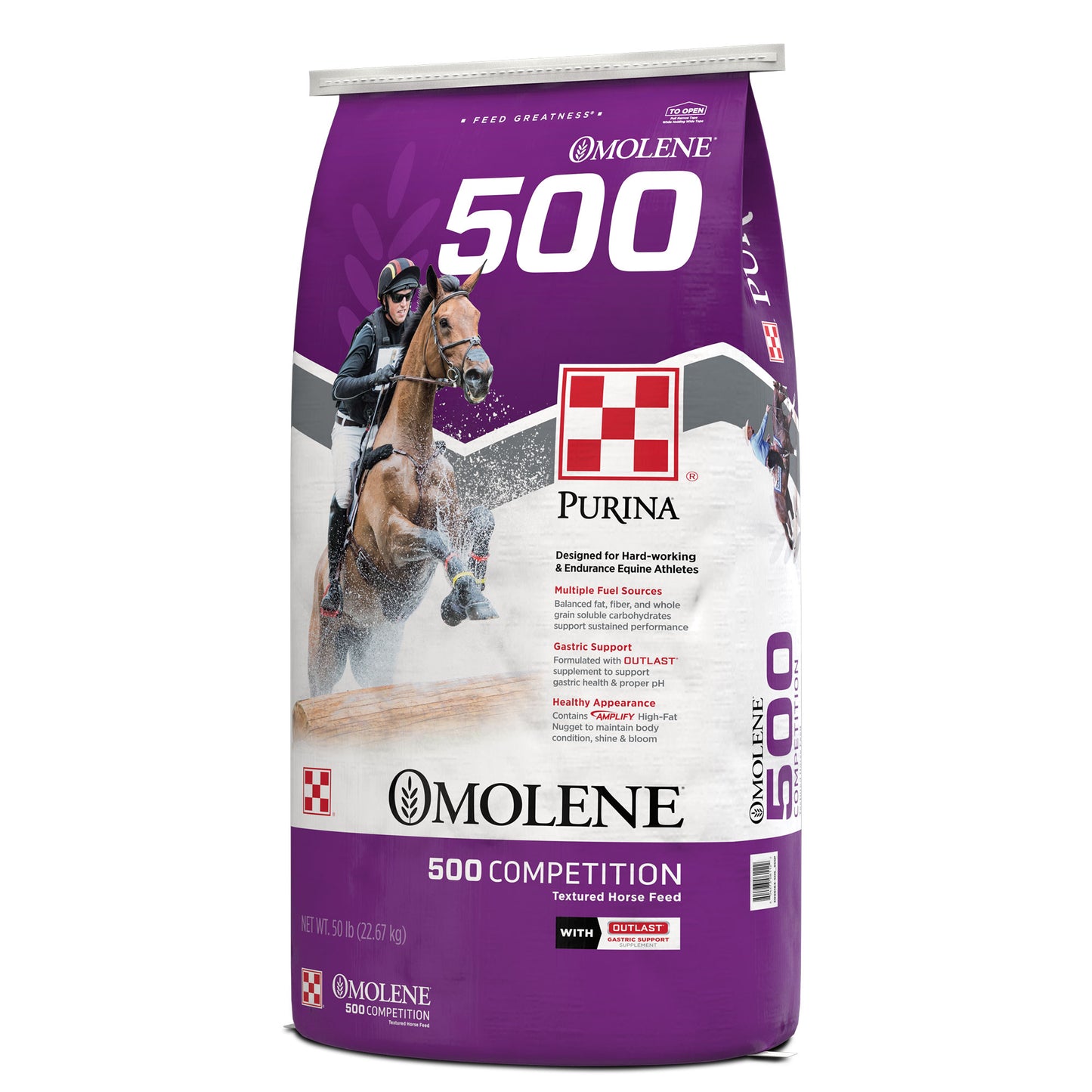
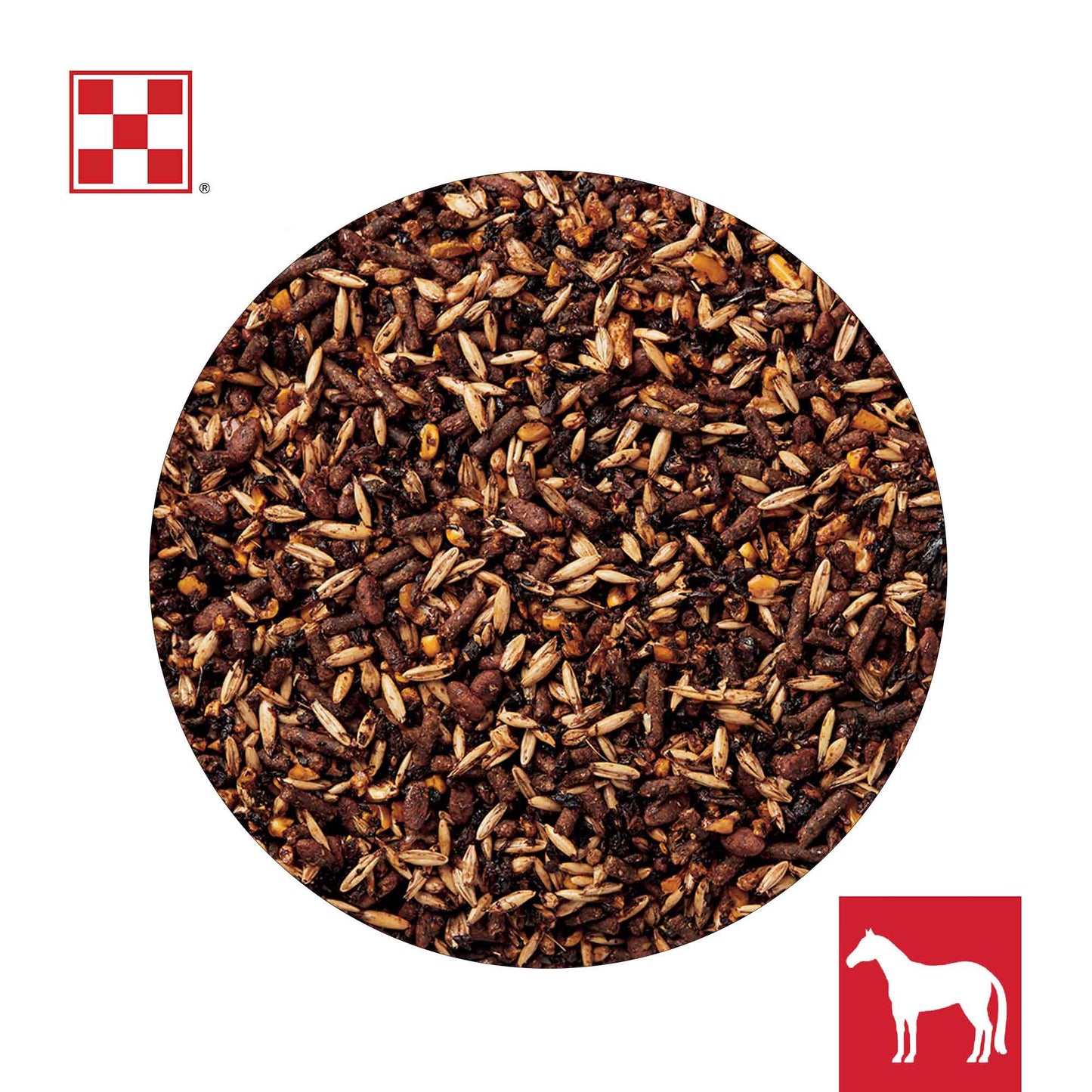
| Nutrient | Min / Max | Amount |
| Crude Protein | MIN | 12.00 % |
| Lysine | MIN | 0.65 % |
| Crude Fat | MIN | 8.00 % |
| Crude Fiber | MAX | 9.00% |
| Acid Detergent Fiber (ADF) | MAX | 12.00 % |
| Neutral Detergent Fiber (NDF) | MAX | 27.00 % |
| Calcium (Ca) | MIN | 0.80 % |
| Calcium (Ca) | MAX | 1.30 % |
| Phosphorus (P) | MIN | 0.50 % |
| Copper (Cu) | MIN | 55.00 PPM |
| Selenium (Se) | MIN | 0.60 PPM |
| Zinc (Zn) | MIN | 220 PPM |
| Vitamin A | MIN | 3000 IU/LB |
| Vitamin E | MIN | 150 IU/LB |
FEEDING DIRECTIONS WITH HAY OR PASTURE: Start with the amounts of Omolene® 500 COMPETITION given for the weight and lifestyle of the horse. After observing the horse for a period of time, the amount fed may be gradually increased or decreased to obtain the desired body condition and weight.
For feeding directions outside the ranges addressed in these feeding charts, please contact your local Purina® retailer or Purina Customer Service at 800-227-8941.
| Lifestyle | Weight of Horse in Pounds | ||
| 800 | 1,000 | 1,200 | |
| Minimum Hay or Equivalent Pasture* | 9.5 | 12.0 | 14.5 |
| Omolene® 500 Horse Feed (lbs/day)** | |||
| Light Work | 4.25 | 5.25 | 6.25 |
| Moderate Work | 5.75 | 7.00 | 8.25 |
| Heavy Work | 7.25 | 8.75 | 10.50 |
*This is the recommended minimum amount of hay to be fed. If feeding more hay, you may reduce the feeding rate of Omolene® 500 needed to maintain appropriate body condition.
**Do not feed less than 0.3 lbs per 100 lbs of body weight per day for mature horses (3 lbs per 1000-lb horse). If your horse gains too much weight at that minimum feeding rate, replace Omolene® 500 with Purina® ENRICH PLUS® Ration Balancing Horse Feed.
Feeding rates of Omolene® 500 and forage may be adjusted or feed may be top-dressed with Purina® Amplify® High-Fat Supplement for additional calories. Hard-working horses may also benefit from supplementation with Purina® SuperSport® Amino Acid Supplement.
Changing To
- Make the feed change gradually over a period of 7 to 10 days.
- Mix the new feed with the old, gradually increasing the amount of the new feed while decreasing an equal amount of the old.
- Changes in the rate of feeding should not exceed 1 pound per day for each horse.
Caution
Store in a dry, well-ventilated area protected from rodents and insects. Do not feed moldy or insect-infested feed to animals as it may cause illness, performance loss or death.
Important
- Feeding rates will vary with size, age, temperament, health status, forage quality, climate and activity level. Feed at regular times, at least twice daily. Do not feed more than 0.5 lbs/100 lbs of body weight per meal. Do not feed free-choice. Prevent the rapid eating by the horse of any feedstuff.
- Reduce and/or delay feeding a horse which is hot, excited or showing pain, has fever or diarrhea. Consult your veterinarian if any problems arise.
- Always feed a minimum of 1.0 to 1.2 lbs per 100 lbs of body weight of good quality, clean hay or the equivalent in pasture.
- Any feed changes should be made gradually over a period of 7 to 10 days. Changes in the rate of feeding should not exceed 1.0 lb per day for each horse.
- Provide fresh, clean water at all times. Provide your horse with access to salt. Consult with your veterinarian regularly and maintain a routine dental, parasite control and health care program for your horse.
It took over 100 years of industry-leading research and innovation to build today’s Purina® Omolene® horse feed lineup. We started with naturally nutritious high-quality whole grains packed with antioxidants, phytonutrients and prebiotic fibers. From there, countless nutrition studies and feeding trials at the Purina Animal Nutrition Center led to scientific breakthroughs that keep our formulas on the cutting-edge of equine nutrition and performance. Because only innovations proven to have the highest level of performance and safety earn their place in Purina® Omolene® horse feeds, you can feed with full confidence. Whether you need to fuel intense competitive performance, support your horse’s gastric health or nourish the growth of the next generation of equine athletes, Omolene® feeds are built to help solve your toughest nutritional challenges.
When there’s greatness on the inside, it shows on the outside.
| Nutrient | Min / Max | Amount |
| Crude Protein | MIN | 12.00 % |
| Lysine | MIN | 0.65 % |
| Crude Fat | MIN | 8.00 % |
| Crude Fiber | MAX | 9.00% |
| Acid Detergent Fiber (ADF) | MAX | 12.00 % |
| Neutral Detergent Fiber (NDF) | MAX | 27.00 % |
| Calcium (Ca) | MIN | 0.80 % |
| Calcium (Ca) | MAX | 1.30 % |
| Phosphorus (P) | MIN | 0.50 % |
| Copper (Cu) | MIN | 55.00 PPM |
| Selenium (Se) | MIN | 0.60 PPM |
| Zinc (Zn) | MIN | 220 PPM |
| Vitamin A | MIN | 3000 IU/LB |
| Vitamin E | MIN | 150 IU/LB |
FEEDING DIRECTIONS WITH HAY OR PASTURE: Start with the amounts of Omolene® 500 COMPETITION given for the weight and lifestyle of the horse. After observing the horse for a period of time, the amount fed may be gradually increased or decreased to obtain the desired body condition and weight.
For feeding directions outside the ranges addressed in these feeding charts, please contact your local Purina® retailer or Purina Customer Service at 800-227-8941.
| Lifestyle | Weight of Horse in Pounds | ||
| 800 | 1,000 | 1,200 | |
| Minimum Hay or Equivalent Pasture* | 9.5 | 12.0 | 14.5 |
| Omolene® 500 Horse Feed (lbs/day)** | |||
| Light Work | 4.25 | 5.25 | 6.25 |
| Moderate Work | 5.75 | 7.00 | 8.25 |
| Heavy Work | 7.25 | 8.75 | 10.50 |
*This is the recommended minimum amount of hay to be fed. If feeding more hay, you may reduce the feeding rate of Omolene® 500 needed to maintain appropriate body condition.
**Do not feed less than 0.3 lbs per 100 lbs of body weight per day for mature horses (3 lbs per 1000-lb horse). If your horse gains too much weight at that minimum feeding rate, replace Omolene® 500 with Purina® ENRICH PLUS® Ration Balancing Horse Feed.
Feeding rates of Omolene® 500 and forage may be adjusted or feed may be top-dressed with Purina® Amplify® High-Fat Supplement for additional calories. Hard-working horses may also benefit from supplementation with Purina® SuperSport® Amino Acid Supplement.
Changing To
- Make the feed change gradually over a period of 7 to 10 days.
- Mix the new feed with the old, gradually increasing the amount of the new feed while decreasing an equal amount of the old.
- Changes in the rate of feeding should not exceed 1 pound per day for each horse.
Caution
Store in a dry, well-ventilated area protected from rodents and insects. Do not feed moldy or insect-infested feed to animals as it may cause illness, performance loss or death.
Important
- Feeding rates will vary with size, age, temperament, health status, forage quality, climate and activity level. Feed at regular times, at least twice daily. Do not feed more than 0.5 lbs/100 lbs of body weight per meal. Do not feed free-choice. Prevent the rapid eating by the horse of any feedstuff.
- Reduce and/or delay feeding a horse which is hot, excited or showing pain, has fever or diarrhea. Consult your veterinarian if any problems arise.
- Always feed a minimum of 1.0 to 1.2 lbs per 100 lbs of body weight of good quality, clean hay or the equivalent in pasture.
- Any feed changes should be made gradually over a period of 7 to 10 days. Changes in the rate of feeding should not exceed 1.0 lb per day for each horse.
- Provide fresh, clean water at all times. Provide your horse with access to salt. Consult with your veterinarian regularly and maintain a routine dental, parasite control and health care program for your horse.
Reviews
You May Also Like

For the widest selection of Purina products – along with personal service and know-how – check with your local retailer.

